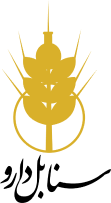حب الشفا(ترکیب طب سنتی ایران) در سندرم ترک و اثرات آن در سم زدایی حاد معتاد به مواد افیونی: کارآزمایی بالینی تصادفی دوسوکور
Seyed Mohammad Nazari, Mohsen Naseri, Azarakhsh Mokri, Ali Davati and Mohammad Kamalinejad
چکیده:
حب الشفا یک فرآورده طب سنتی طبیعی ایران(TIM) است که قرن ها به عنوان جایگزینی برای درمان اعتیاد به تریاک استفاده می شود. در این کارآزمایی بالینی تصادفی، دوسوکور، کنترل شده، اثر حب الشفا در درمان اعتیاد به مواد افیونی مورد بررسی قرار گرفت. در یک دارونما دوسوکور کارآزمایی بالینی کنترل شده، 90 بیمار بستری با وابستگی به مواد افیونی که مداخله خودیاری کمکی دریافت کردند، به طور تصادفی به سه گروه تقسیم شدند. حب الشفا به گروه اول تجویز شد: g/day 3، برای 4بار در روز، در روزهای 1 تا 7، در طی 14 روز کاهش یافت. برای گروه دوم کلونیدین تجویز شد: (بر حسبmg/day) 0/2 تا 0/4 در روزهای 1 تا 2، (بر حسبmg/day) 0/6 در روزهای 3 تا 18 و (برحسب mg/day) 0/4 تا 0/2 در روزهای 20 تا 21. به گروه سوم دارونما تجویز شد. متغییرهای مورد مطالعه شامل حفظ درمان، میزان موفقیت سم زدایی، بررسی روزانه مقیاس ترک مواد افیونی ذهنی، عینی و بالینی، مقیاسهای افسردگی، شدت ولع مصرف، عوارض جانبی، علائم حیاتی و الکتروکاردیوگرافی(ECG) و تست های بیوشیمایی در ابتدا و انتهای مطالعه بودند. کنترل علائم ترک و افسردگی در گروه حب الشفا بهتر از سایر گروه ها بود(0/05>p).
Abstract:
Hab-o Shefa is a natural traditional Iranian medicine (TIM) product that many centuries used as a replacement for opium addiction treatment. In this randomized, double blind, controlled, clinical trial the effect of Hab-o Shefa was studied in the treatment of opiates addiction. In a double blind placebocontrolled clinical trial, 90 in patients with opiates dependency that received an assisted self help intervention, were randomly divided into the three groups. Hab-o Shefa was administered to the first group: 3 g/day four times daily on days 1 to 7, tapered down over 14 days. Clonidine was prescribed to the second group: 0.2 to 0.4 mg/day on days 1 to 2, 0.6 mg/day on days 3 to 18 and 0.4 to 0.2 mg/day on days 20 to 21. Placebo was administered to the third group. Studied variables included treatment retention, detoxification success rate, daily check of subjective, objective and clinical opiate withdrawal scale, depression scales, craving intensity, side effects, vital signs and electrocardiography (ECG) and biochemical tests at the beginning and end points of the study. Control of withdrawal symptoms and depression in Hab-o Shefa group was better than the other groups (P<0.05).


